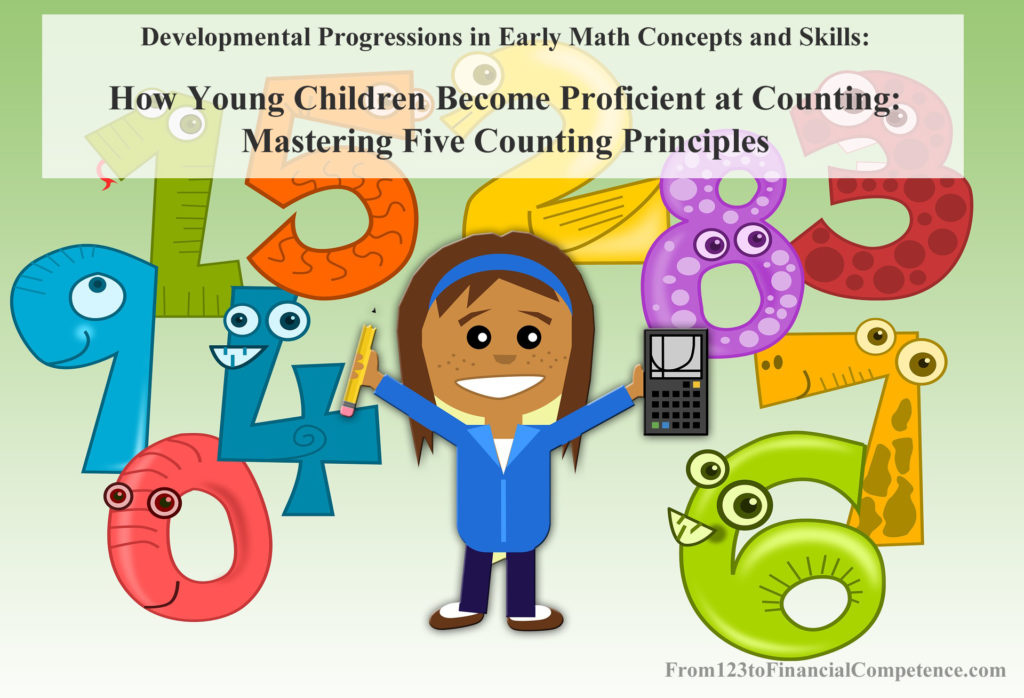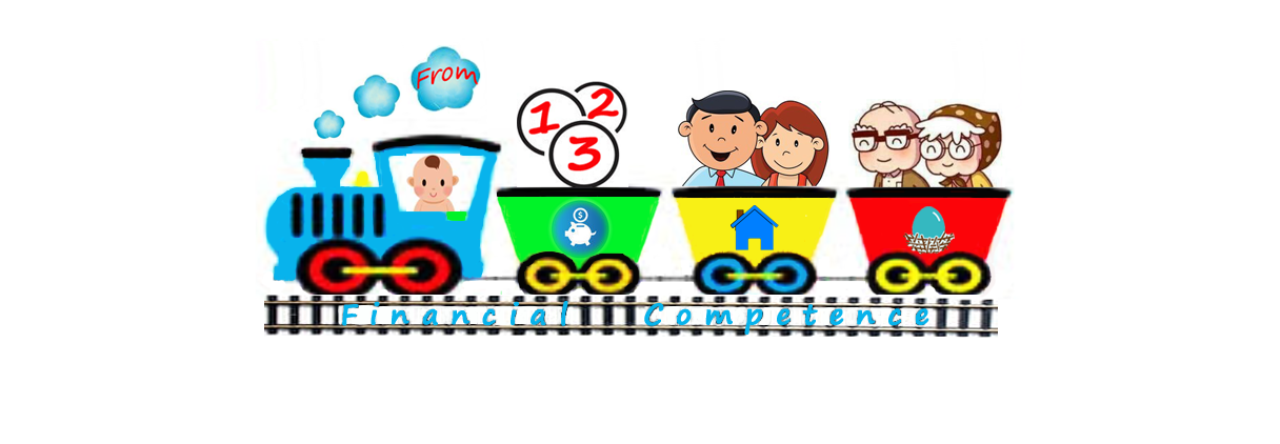Learning to count involves a whole set of complex processes your child must master in order to become proficient at counting. It’s not as simple as learning a sequence of number words. When you give your child specific instructions to develop these early math skills and continue helping refine and consolidate such skills, your child will be more prepared for higher levels of math learning when he/she is in formal school.

When Teaching Your Child to Count
Do a Google search on ‘counting activities for young children’, and the browser returns over 1 million results. As parents, we are fortunate to have these resources so readily available at our disposal. At the same time, like many parents, you probably feel overwhelmed and have many questions.
Which sites are trusted sources? What does the research say about these activities?
What are the learning objectives of these counting activities? Is there an order to which I should introduce these activities to my child?
Which learning experiences are developmentally appropriate so that my child can stay engaged in the activity and not get discouraged?
What do I do with the feedback/reactions (both verbal and nonverbal) my child is sharing with me? How do I know if I’m missing certain steps in the teaching process? What might those processes be?
How do I determine what my child needs to know next?
Being an Advocate for Your Child
Research has generally shown that parents tend to overestimate their children’s early math skills and abilities [citation]. Some parents mistakenly think their children can count even when their children just keep pointing at objects randomly. When this group of children entered formal school, their parents would be surprised to hear from teachers that these kids aren’t ready to do elementary math.
Don’t let this happen to your child. Take control of what your child learns and be ready to defend your choices. Get behind the brain of your child. Try to see the world from his/her perspective. What’s easy for him/her? What’s challenging? What instructional and emotional support can you provide?
For many of us, being good at this involves learning on our part. And our children need this from us. They look to us for guidance and answers. How can we be their teacher and role model when we don’t even know why we’re doing certain things that are supposed to be good for them?
When my husband and I first set out to teach our daughter how to count (I shared the story in an earlier article), we weren’t aware of the complex processes that are involved as we attempted to help her develop this early math skill. It was only when we had made attempt after attempt and still failed to see desirable results that I decided to learn about the research and theories behind counting.
I didn’t want to just browse the web and seek out counting activities my daughter and I can do to help her facilitate these early skill. There are plenty of such activities. I’ve decided instead to browse academic papers written on counting. I needed to know which activities to start first and what the learning goals are behind the activities. What research evidence is there to support these activities? In order teach my daughter to count accurately and meaningfully, what kinds of skills would she need to develop and in what order?
I have so many questions, and I believe I can find the answers in the research literature. Once I understand the processes that are involved in early learning, I’d be more prepared to respond and adapt when questions or problems come up during the teaching process.
Developing an Appreciation for Your Child
It has been almost two weeks since I started reading the research literature on young children’s early math development. Having some understanding of the research and theories in this area gives me the insights and confidence I needed to become a better teacher for my daughter. As I study the complexities involved in early math learning, I’ve come to appreciate my daughter’s strengths and learning capabilities. A young child’s brain is remarkably amazing once you become aware of what he/she needs to go through to master a skill (such as counting) that many of us adults considered “simple”.
Do you want to become more engaged in your child’s learning and develop a deeper appreciation for the processes involved?
Do you want to become a better teacher for your child?
Do you no longer want to be that parent who wakes up one day and not know how your child learned to do ‘1+1=2’?
I encourage you to explore the research on children’s cognitive development. The processes that take place as your child acquires new skills are complex, remarkable and fascinating! I promise you will develop an appreciation for your child’s learning capacities, as I have with mine. Knowing what I know and feel now, I find myself craving to learn more about what exactly goes on inside my daughter’s brain as she takes on learning and mastering each new task.
In this article, I am sharing the five principles that govern and definite counting. Our children need to develop and master these skills before they can count accurately and meaningfully.
Gelman and Galistel’s Five Counting Principles
In 1978, researchers Rochel Gelman and Randy Gallistel introduced five distinct principles that young children need to understand in order to be proficient counters. The first three principles definite the counting procedure (“How to count”), the fourth relates to what to count and the fifth distinguishes counting from labeling. Even though these five processes follow a linear sequence, exposure to certain experiences enables some children to acquire these early skills simultaneously.
The One-One Principle
This principle emphasizes the importance of assigning one, and only one, distinct counting word to each of the items to be counted. To follow this principle, a child has to coordinate two processes, partitioning and repartitioning. This simply means that a child has to mentally partition which items have already been counted (and therefore transferred to the counted category) and those that have not. If an item is not assigned a number name or is assigned more than one number name, the resulting count will be incorrect.
One strategy young children use to facilitate the coordination of partitioning and repartitioning is by pointing to each object and stating at the same time the associated number word. As our children’s primary teacher, we naturally teach them to use this coordination of physical pointing and verbal naming while helping them learn to count.
The Stable-Order Principle
To be able to count also means knowing that the list of number words used must have a fixed order or counting sequence that will stay consistent. For example, it is always 1, 2, 3, 4, 5 and not 1, 2, 4, 5, 3.
The Cardinal Principle
This principle states that the last number word spoken, when counting a set of items, tells how many items are in the set (quantities). Children who fully grasped this principle recognizes that earlier numbers words were temporary steps toward the last number word and that the last number actually represents the total number. Once your child understands this principle, he/she can follow the instruction when asked to take out 2 crayons from a pack of 8.
If the counting is stopped in between, then the last number called out is the number that tells about how many was counted so far and then proceed further. In order for your child to understand that the next number in a sequence is one number more or represents a larger quantity, mastery of this skill is required.
The Abstraction Principle
The abstract principle says that children can count different sized objects (and of different colors or shapes) and treat them the same numerically. To understand this principle, children also need to realize that non-physical things (such as sounds) and imaginary objects can also be counted. For example, one can count ideas and drumbeats.
The Order-Irrelevance Principle
This last principle refers to your child’s knowledge that the order in which items are counted is irrelevant. It does not really matter whether the counting procedure is carried out from left to right, from right to left or from somewhere else, the number in the set does not change.
Concluding Remarks
As you’ve read, learning to count involves a whole set of complex processes your child must master in order to become proficient at counting. It’s not as simple as learning a sequence of number words. As a parent, unless you’re an early childhood educator or have consciously made the decision to read about these early math skills or had someone tell told you about these principles, how could you have known?
As I’m writing this, I feel the need to take an even more active role in my child’s learning. I also feel the need to share what I’ve learned with other parents. It’s not fair that some children enter formal school much more prepared to learn than others, due to all kinds of reasons (such as parental education, socioeconomic status, support and resources). I’m going to do everything I can to help my child prepare for formal school. Along the way, I hope I’m helping you help yours, too.
References:
Children’s Acquisition of the Number Words and the Counting System
Early Predictors of Mathematics Achievements and Mathematics Learning Difficulties


Comments are closed.